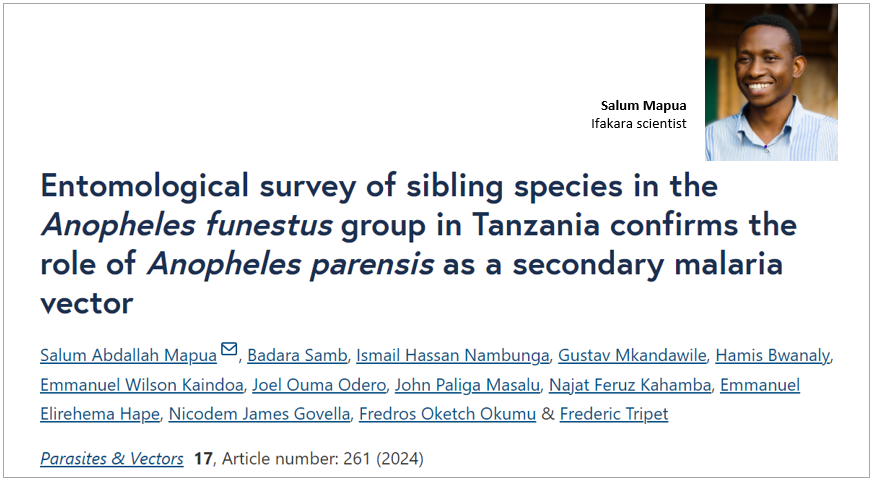
MALARIA CONTROL: Addressing the threat of lesser-known mosquitoes

Important new findings from a study spanning four years in Tanzania underscore the urgent need to address lesser-known malaria vectors, as research reveals the potential threat these species pose in spreading malaria.
Conducted between 2018 and 2022 across 12 regions in Tanzania, the study was led by Ifakara Health Institute in collaboration with Cheikh Anta Diop University of Dakar (UCAD) and Swiss TPH. It assessed mosquitoes of the Anopheles funestus group, focusing on their species composition, distribution, and malaria transmission potential.
Bridging knowledge gaps on malaria transmission
The scientists aimed to bridge the knowledge gaps about the contribution of different Anopheles species to malaria transmission in the country.
“Anopheles funestus mosquitoes are among the most widespread, and yet also among the least studied species of malaria vectors... This current study aimed to expand on the existing knowledge towards understanding the vectorial role of An. funestus species across Tanzania mainland,” they wrote in the article published on the Parasites & Vectors journal.
Utilizing advanced techniques
By using advanced methods, such as CDC light traps and Prokopack aspirators, the research team collected mosquito samples from homes. These samples were analyzed using polymerase chain reaction (PCR) assays to identify specific species and detect malaria infections.
Variations in transmission rates reported
The scientists found four known and previously reported sibling species of the An. funestus group (i.e. An. funestus s.s., An. parensis, An. rivulorum and An. leesoni), with An. funestus species dominating malaria transmission across all the 12 regions surveyed accounting for 50.3% of the mosquito samples. Additionally, other mosquito species including An. parensis made up 11.4%, with smaller percentages for An. rivulorum and An. leesoni.
Regions with the highest malaria transmission rates included the north-western and south-eastern areas, recording entomological inoculation rates of 108.3 and 72.2 infectious bites per person per year, respectively.
Why address secondary malaria vectors
The scientists underscored the importance of addressing the role of secondary malaria vectors, such as An. parensis, which has been identified as a vector on multiple occasions, to improve malaria control efforts.
“The incrimination of An. parensis with transmission of P. falciparum in this study provides only the third such report in Tanzania in the past 15 years… Collectively, these repeated observations suggest that An. parensis may be playing a modest but considerable role as a secondary malaria vector in Tanzania and should be further investigated to optimize the control of malaria transmission.”
Moreover, the scientists called for a better understanding of these secondary vectors. “Whereas An. funestus s.s. is the dominant malaria vector in the Funestus group in Tanzania, this survey confirms the occurrence of Plasmodium-infected An. parensis, an observation previously made in at least two other occasions in the country," they urged. "The findings call for a deeper investigation into the ecology and vectorial capacity of secondary vectors to enhance malaria control strategies.”
Ifakara scientists lead the study
Salum Abdallah Mapua, a scientist from the Ifakara Health Institute, and Badara Samb from Cheikh Anta Diop University of Dakar co-led the study, supported by Ifakara scientists Fredros Okumu and Frederic Tripet from Swiss TPH.
Additional contributors from Ifakara include Ismail Nambunga, Gustav Mkandawile, Hamis Bwanaly, Emmanuel Kaindoa, Joel Odero, John Masalu, Najat Kahamba, Emmanuel Hape, and Nicodem Govella.
Read the publication here.
